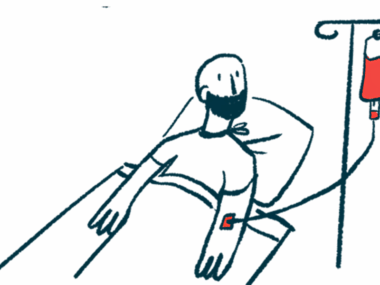Too Much Pyridostigmine May Increase Overactive Bladder Issues
Written by |

High pyridostigmine doses cause overactive bladder issues in people with myasthenia gravis (MG), according to a recent study.
Because of this, doctors should take patients’ bladder-related discomfort into account when deciding treatment regimens, and consider prescribing lower pyridostigmine doses or alternative therapies.
The study, “Overactive bladder in patients with myasthenia gravis — A cross‐sectional population‐based study,” was published in the journal Acta Neurologica Scandinavica.
Pyridostigmine, marketed as Mestinon, Regonol, or other generic brands, is the most commonly prescribed acetylcholinesterase inhibitor (AChEi) used to treat MG. The medication works by increasing the availability of acetylcholine, a chemical normally released by nerve cells that causes muscle cells to contract.
Bladder dysfunction is a known side effect of the medication, albeit less well-studied than others, such as abdominal cramps and diarrhea. Studies investigating bladder dysfunction in MG also are scarce, leaving the relationship between issues such as overactive bladder (OAB) and AChEi relatively unknown.
OAB is a condition in which one experiences sudden difficult-to-resist urges to urinate. Although OAB often manifests as frequent voiding in small volumes, it also can trigger the production of abnormally high volumes of urine, as well as nighttime urges with or without bladder control loss.
Scientists from Aarhus University, in Denmark, compared the prevalence and burden of OAB symptoms in 83 people with MG to those of 50 healthy age- and sex-matched controls, and explored the relationship between these symptoms and daily pyridostigmine doses.
Researchers evaluated OAB symptoms by having participants complete the International Consultation on Incontinence Questionnaire Overactive Bladder Module (ICIQ-OAB). The questionnaire assesses which symptoms a patient experiences, how often, and includes a “bother score” that allows them to rate how bothersome these symptoms are.
MG patients had higher overall ICIQ-OAB scores than controls, indicating more bladder symptoms, and higher bother scores, suggesting that the symptoms they had affected them to a greater degree.
Higher scores were spread across symptoms, with no single symptom explaining the higher total score.
Investigators then evaluated the possible link of pyridostigmine dose to OAB scores by separating MG patients into four dosage groups: those not receiving pyridostigmine; those receiving the medication at a daily dose lower than 300 mg; those taking pyridostigmine at a daily dose ranging from 301 to 600 mg daily; and those being treated with more than 600 mg of pyridostigmine daily.
OAB scores differed noticeably between the four groups, with those receiving more than 300 mg of pyridostigmine daily scoring significantly higher, suggesting that 300 mg represented a threshold for bladder symptoms.
Although patients with more severe MG tended to receive higher doses of pyridostigmine, the correlation between disease severity and treatment dose did not appear statistically significant.
Furthermore, neither OAB nor bother scores differed significantly between participants with ocular MG and generalized MG.
Researchers suggested that the bother score should be taken into account when treating OAB. Individuals with high OAB scores, but low bother scores, may not need treatment.
However, when high bother scores exist, clinicians may consider resorting to more conservative treatments first, such as pelvic floor training and weight loss. If symptoms remain, then pharmacological treatment with beta-3-andrenergic agonists, such as Myrbetriq (mirabegron), may be considered.
“These options are important to consider,” they wrote, “particularly if a higher dose of pyridostigmine is needed.”
Overall, MG patients displayed more overactive bladder symptoms and these symptoms had a greater impact on them.
“Symptoms are related to higher doses of pyridostigmine underscoring the importance of reducing the dose as much as possible. If a dose reduction is not possible or does not alleviate the symptoms of overactive bladder, other treatments should be considered,” they concluded.






Leave a comment
Fill in the required fields to post. Your email address will not be published.